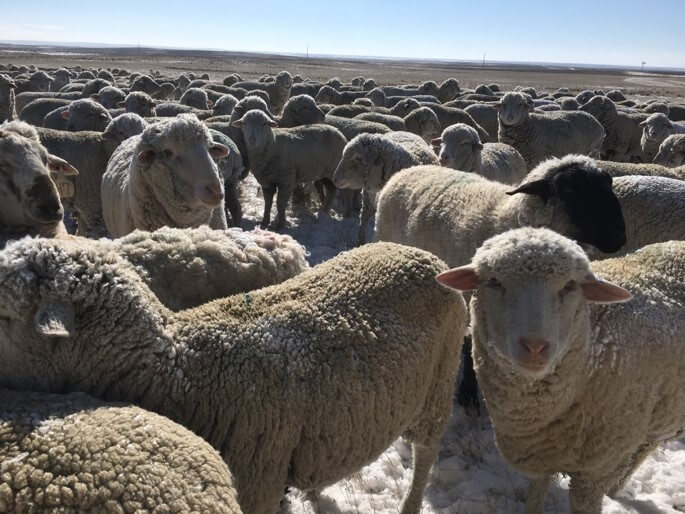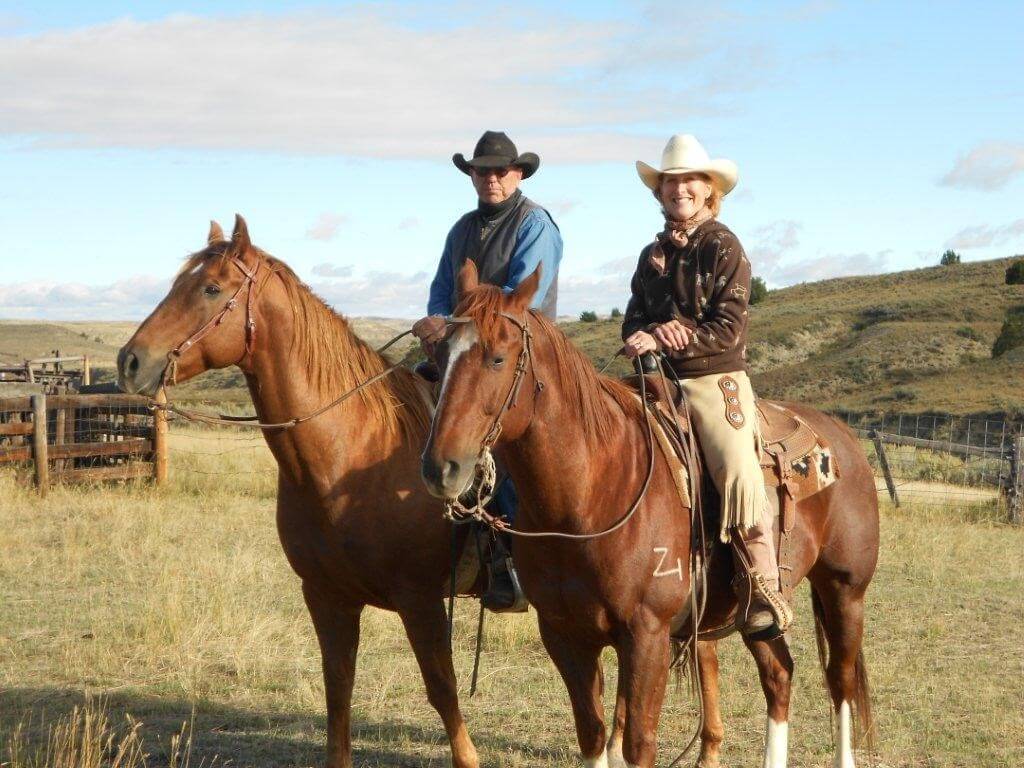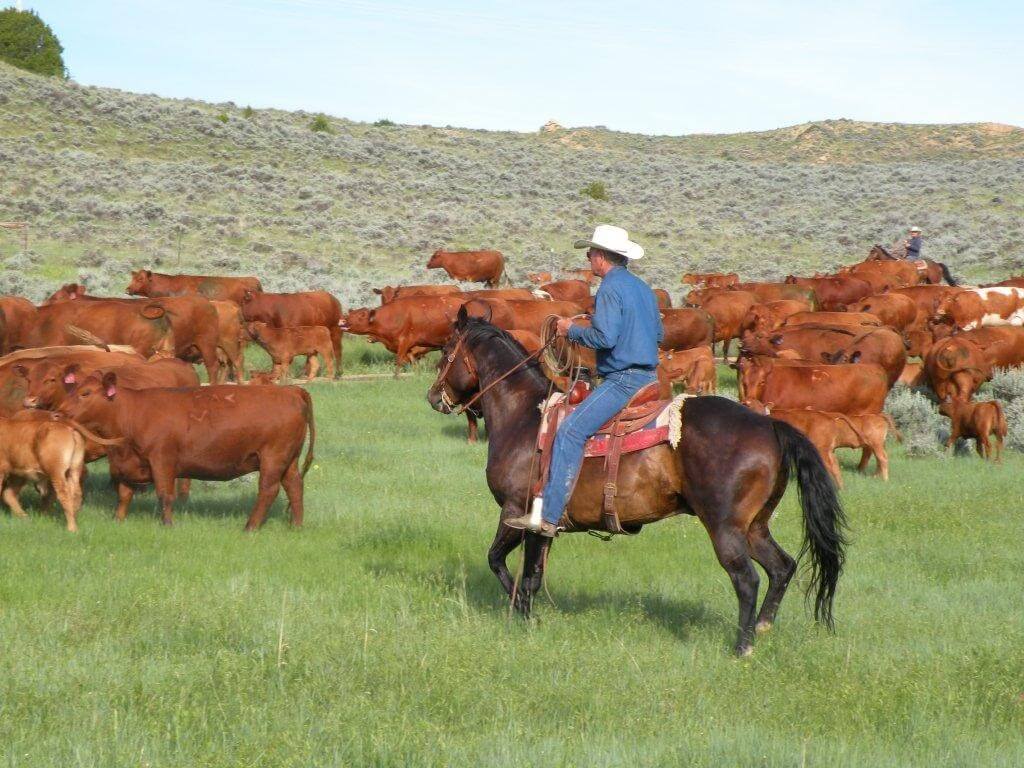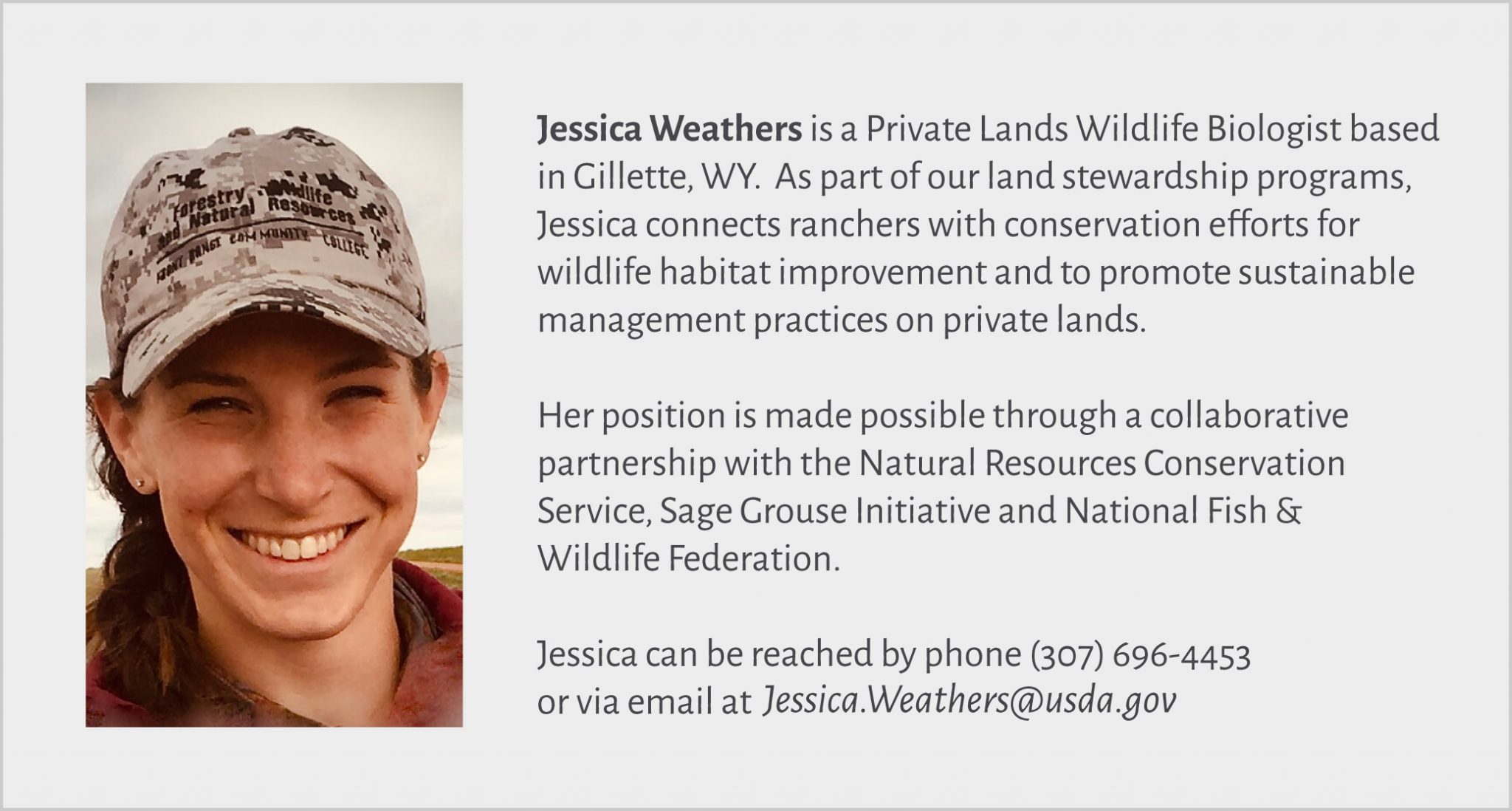Welcome to part 3 in a 4-part series (click here for the first entry) exploring perspectives on modern ranching. Click these links to view part 1 and part 2 of the series.
In our last installment, Jessica Weathers (Private Lands Wildlife Biologist) spoke with Wyoming ranchers Marilyn Mackey and Tom Reed about family heritage, the influence of the oil and gas industry, changing conservation practices, and challenges facing the future of ranching in rural America In today’s post, we discuss their perceptions about how ranching has changed over the years.
Days in the Lives of Ranchers (Part 3 of 4)
A changing landscape for producers
Marilyn Mackey and Tom Reed—introduced in part 2 of this series—have both seen changes in the industry over the years in land utilization and labor demands. In ranching, utilizing all of the resources at your disposal can be the difference between a successful cattle ranching operation and land for sale.
When asked what major changes he has seen over the years, Tom thought for a moment and said, “Mobilization…. A lot of stuff moves with trucking.” He explained that ranchers are now adding land to their operations that would previously not have been accessible. “It used to be, it was 30 miles away, it was a two-day trail.” This has all changed with the ability to move livestock by truck. “It lets you be a little bit better at managing, I suppose, because of the way rains are. You might get rain at that place over there and you can stay there and graze a little longer and utilize the grass where it’s at—the best grass.”
In Wyoming, landscape and vegetation health often varies pasture to pasture, so increased mobility can have a huge influence on productivity and management opportunities.
Women taking charge
Marilyn has also noticed a shift with the age of technology as ranching equipment improves. “We always had hired men when I was growing up,” recounts Marilyn. Because the tractors and equipment were smaller, “we had to put the hay up in little round bails that weighted about 60 to 70 pounds. So, once you had a field of all those then you had to pick those all up and get them moved to a stack. Then in the wintertime, it was the same way to feed them, you had to drive to the stack, load them all up on the back of your pickup, cut the strings on them, and then roll them out by hand. It was very labor-intensive.”
Now, work has become faster and less labor-intensive than in the past, shifting labor dynamics on the ranch. “Because the cost of labor is so high, the women are…I don’t want to say the hired help…but they are working side by side with their husbands, in a lot of cases. We can do in 2 to 3 weeks what it used to take them all summer long. And the same with feeding; you can go out in a couple of hours and feed what used to take all day. Now our machinery has gotten better, our equipment has gotten better—to where it’s easier for women to handle. There’s not so much of that hard, physical labor involved.”
During calving season, Marilyn was often on her own when cows were giving birth. “When my husband was working at the mine, I was there by myself. I had to do that myself,” she said, referring to cows who needed help in the birthing process. This work takes experience and confidence, but Marilyn brushed it off saying, “…but there are a lot of women who do that in agriculture.”
Next installment
Visit our website in two weeks for our next installment in this series! We’ll hear more from these landowners about the management of natural resources in tandem with ranching operations, and why they love what they do.
Jessica Weathers is a former Bird Conservancy of the Rockies Private Lands Wildlife Biologist based in Gillette, WY. This position was made possible with funding support from NRCS and the National Fish and Wildlife Foundation.
Bird Conservancy of the Rockies works with private landowners, land managers and resource specialists to implement habitat enhancement projects. Our biologists and rangeland ecologists identify wildlife-habitat potential and help modify or develop on-the-ground practices that maintain or increase agricultural production and benefit wildlife habitat. For more information, visit our Stewardship page!






